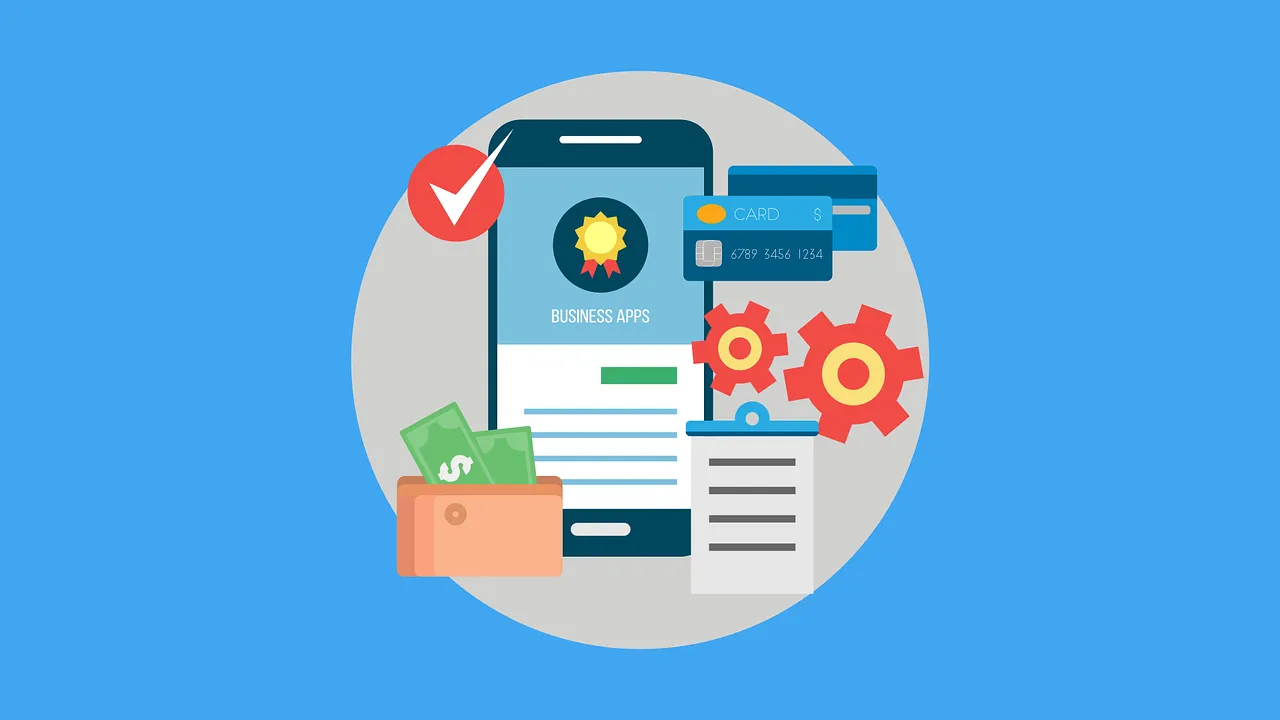Blog
How to use Paid Ads without wasting your budget? Top 7 Strategies

Paid advertising budget management tips
Running paid ads can sometimes feel like a risky endeavor. You create a budget, come up with a few catchy headlines, choose some images, and hope for the best. Sometimes you hit the jackpot. At times, you may experience a period of silence followed by the disappearance of your money. Many people have tried their hand at paid ads without really getting how the systems function or how to maximize their budget, but that’s about to change!
In this guide, we’ll take you through the how, why, and what of paid advertising. Cheers to making smart choices that actually bring about real outcomes!
What Are Paid Ads?
Online ads that companies purchase to advertise their goods, services, or brands are known as paid ads. Most certainly, you’ve seen them as banners on websites, sponsored posts in your social media feed or at the top of Google search results. They might show up on:
- Google and Bing search engines (Google Ads)
- Third-Party Websites via Display Networks
- Online retailers such as Google Shopping and Amazon
- Social media sites such as TikTok, Facebook, Instagram, LinkedIn, and X
Basically, you pay to reach your target demographic more quickly than you might with organic promotion. When done correctly, this technique gives you a fast route to more leads, traffic, and conversions.
How Do Paid Ads Actually Work?
Advertising spend in the U.S. is projected to increase by 5.6% in 2024, reaching approximately $360 billion. Although each platform manages paid advertising a bit differently, the fundamental principles are the same.
You select your platform first. Perhaps Instagram, if your product or service is more visual, or Google, if you want to target those who are actively using search engines. Next, you choose demographics like age groups, regions, hobbies, or habits (such as recently looking for “running shoes”) to identify your audience.
Additionally, you will choose the type of advertisement you wish to run. It may be a brief 15-second video, a carousel of product images, or a straightforward text-based search ad. Your campaign’s objective will determine your format.
After that, you can choose how much to spend and how to be billed. Typical paid advertising price models include:
- Cost-per-click, or CPC, is when you only pay when someone clicks.
- Cost per thousand impressions, or CPM, is the price you spend for each 1,000 views.
- Cost-per-action, or CPA, is when you only pay when a user completes a certain action, such as buying something.
The majority of platforms, including Google Ads, use auctions to decide which ads are displayed. Your cost becomes more efficient the more relevant your ad is (and the better your targeting is).
Ad space on smaller or more specialized platforms may be purchased for a fixed price (for example, $500 for a banner that runs for a month) without any bidding. There are hybrid models even among the major players. For example, Twitter (X) offers premium fixed-price placements like “Promoted Trends” in addition to allowing you to bid on advertising. You can more effectively manage your budget if you are aware of the bidding systems.
You can track the effectiveness of your advertisement once it goes live. You may then make real-time adjustments based on what’s working after seeing how many people noticed it, clicked on it, or converted.
7 Advanced paid advertising tips

These are the top eCommerce advertising strategies to help you expand your company this year.
Use lookalike audiences
Creating an audience that resembles an existing list of leads or customers is known as a “lookalike audience.” Several companies that use Facebook ads have been impacted by the recent iOs 14 update, which has made retargeting more difficult. Therefore, lookalike audiences offer a different approach to connect with the right people and increase sales.
There are several ways to create a lookalike audience. Downloading your email parts and uploading them to Facebook as lists is one method. You might then use this to build a lookalike audience for your browser abandonment, cart abandonment, and repeat existing customers.
Place a bid for branded keywords
Starting to bid on excessively competitive industry keywords is one of the biggest blunders brands make. Their advertising budget can be quickly depleted by this. If you sell products on sites like Amazon or eBay, it’s likely that customers are looking for you on Google.
Featured article: Keyword research for SEO: 10 free tools to boost your rankings
Therefore, placing a bid on branded keywords is the wisest course of action. Nike might bid on phrases like “Nike shoes” or “Nike + product name,” for example. By doing this, you can more effectively target customers who are most likely to make a purchase.
They might be wanting to purchase your product straight from your website after finding you on Amazon. Or they want to examine the materials used to make your products and hear the narrative behind your brand.
The best option is video
Without a doubt, the most engaging kind of content is video. A brief video can explain a whole tale. Additionally, it offers the best return on investment for eCommerce marketing campaigns.
Videos are used by e-commerce companies to advertise on Facebook, Instagram, Pinterest, and online marketplaces such as Amazon.
Retarget using UGC and influencer content
Product recommendations and reviews are the most effective means of product promotion. More than any other type of advertising, user-generated photos are trusted by 55% of consumers. Additionally, research indicates that 86% of women look for buying tips on social media.
What is a brand strategy?
Add user-generated images or videos into your advertisements. Ask influencers to use your product in videos that they make. Influencer videos have frequently been used as advertisements by emerging businesses.
Launch on new social platforms
Facebook and Instagram continue to be the most effective advertising channels for eCommerce, but they are getting more and more crowded and costly. Seek for more recent platforms where your advertising investment can have a greater effect.
For example, you ought to try Instagram if you’re not getting enough sales or a high enough return on ad spend (ROAS) on Facebook. Another choice might be Pinterest, where the advertisements can be more affordable and precisely targeted.
Featured article: The importance of A/B testing in digital marketing
Paid Amazon advertising can be significantly less expensive than Facebook or Google and produce substantially better results if you currently sell your goods there. You can use Amazon ads to boost your marketplace’s organic sales as well.
Make advertising campaigns for every stage of the marketing funnel
The programmatic advertising market is projected to grow from $23.5 billion in 2024 to $235.71 billion by 2032, indicating a significant expansion. eCommerce brands also make a big mistake while setting up their campaigns. Some companies start ads on occasion to coincide with holidays, events, or new product releases, yet they don’t get the desired outcomes.
Organizing your advertising activities in accordance with your marketing funnel is the ideal approach. Each campaign should focus on the top, middle, and bottom of the marketing funnel.
Make use of contextual advertising
When an advertisement is shown according to the content of the article the user is now viewing, this is known as contextual advertising. This strategy differs from behavioral advertising, which targets users according to their online activity (i.e., the products they have browsed, the items they have put to their cart, etc.).
Google’s Display Network allows you to choose particular article themes that are relevant to your product, which is how contextual advertising in eCommerce is carried out. The next step is to start your ad after choosing your keywords, which may include negative keywords.
Contextual advertising has the benefit of not being subject to privacy laws because it does not involve user tracking. Additionally, it is less expensive and offers a low-cost method of testing your ideas and rapidly gathering a large amount of data.
Do You Need a Marketing Pro for Paid Ads?
Not all the time. You may start your first campaign with the help of beginner-friendly tools on platforms like Meta and Google, but if you’re feeling overwhelmed by the possibilities, have a limited amount of time, or have a larger budget, yes, it’s probably time to get some assistance!
So if you’re tired of trying to figure it all out, we’re here to help you turn things around.
Conclusion
With Google Ads, you can obtain results without spending a lot of money.
You’re already headed for success by establishing specific objectives, selecting appropriate keywords, and efficiently organizing your ad groups.
You’ll be astounded at what you can achieve, even on a limited budget, if you combine smart negative keyword usage, intriguing ad copy, and consistent campaign monitoring. You can conduct campaigns that draw in the ideal clients, increase brand recognition, and raise revenue without going over budget if you use some strategic thinking.
Why not give these suggestions a try? They are meant to help you get the most out of your investment.
Share
15 Minutes Free Discovery Call
How Zrafted Can Help Businesses?
- Contact Centre Solutions
- Managed IT Services
- Digital Marketing
- Business Process Outsourcing
- Virtual Assistance
- E-Commerce
